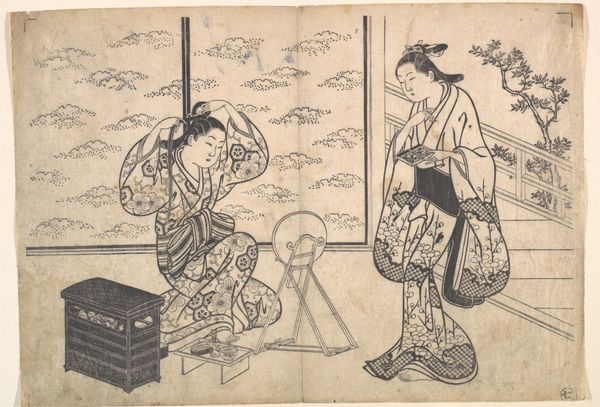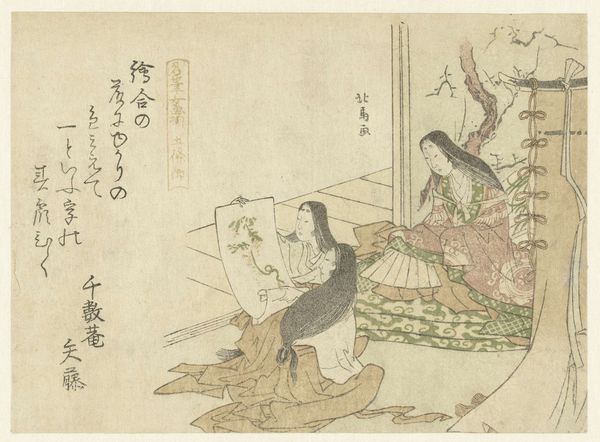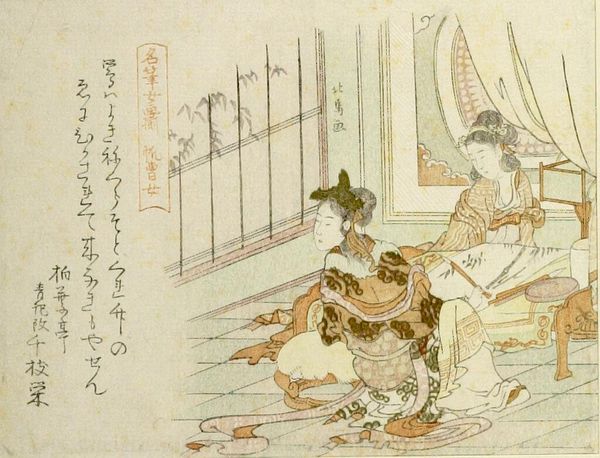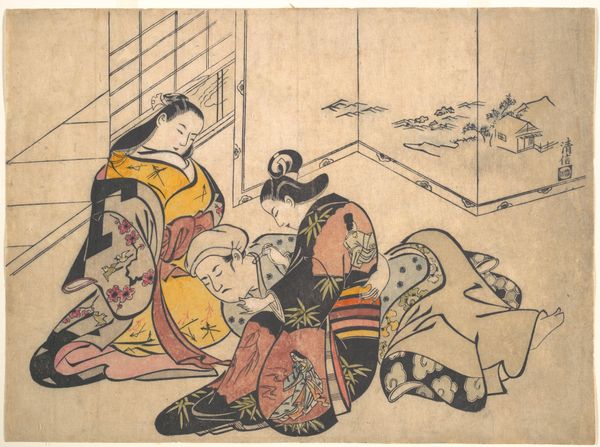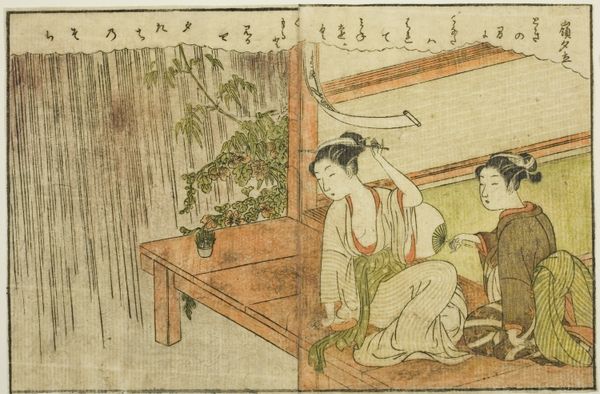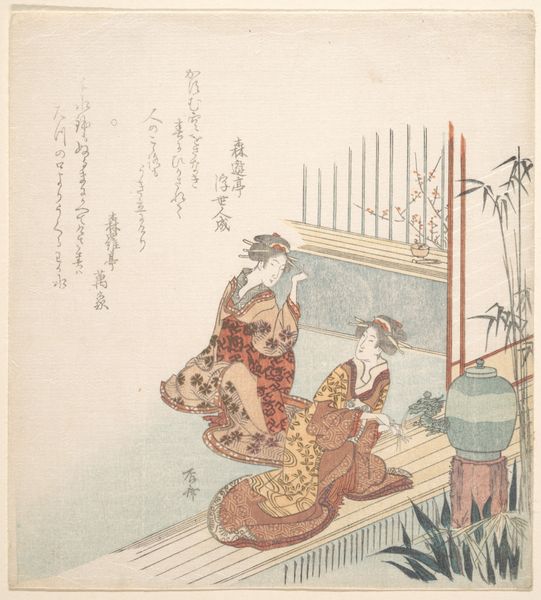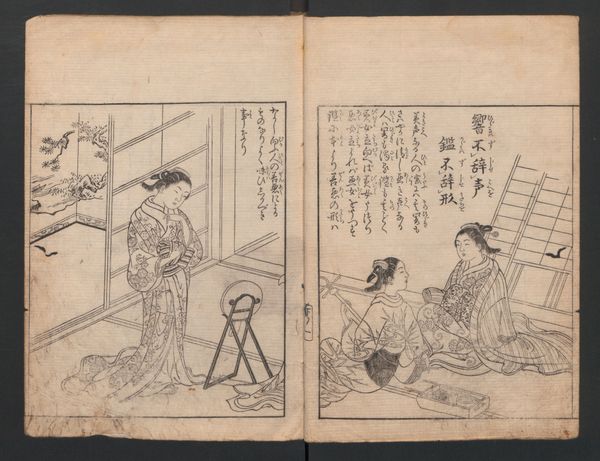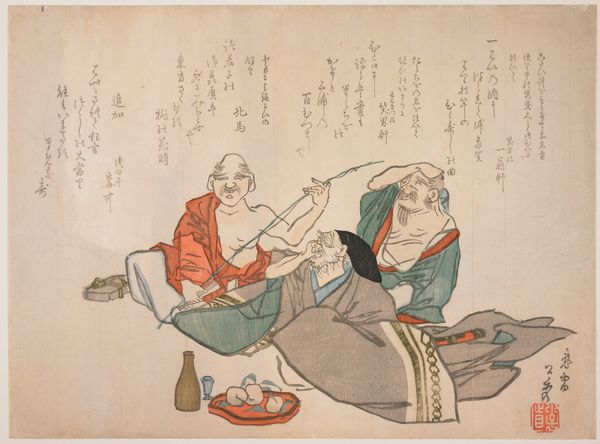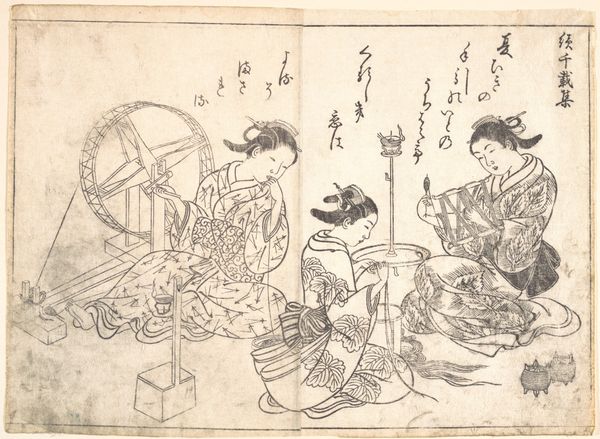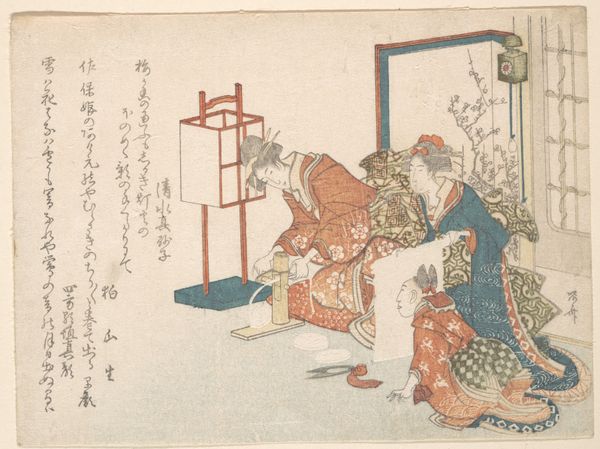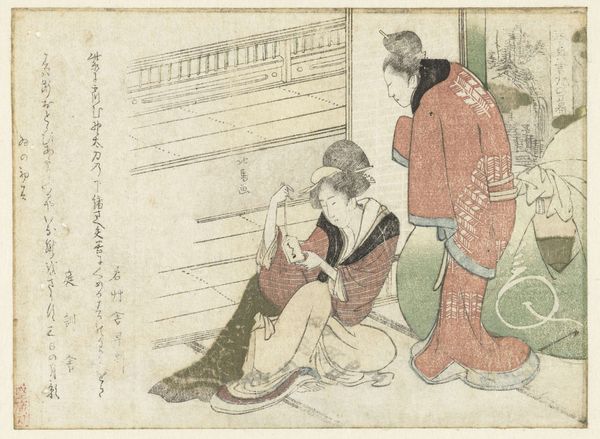
drawing, print, paper, watercolor, ink, woodcut
#
portrait
#
drawing
# print
#
asian-art
#
ukiyo-e
#
paper
#
watercolor
#
ink
#
woodcut
#
watercolour illustration
#
genre-painting
#
watercolor
Dimensions: height 129 mm, width 178 mm
Copyright: Rijks Museum: Open Domain
Curator: This woodcut print, delicately rendered in ink and watercolor on paper, is entitled "A Lady Making a Painting of Bamboo," created by Teisai Hokuba around 1800-1805. What's your initial response? Editor: The gentle washes of color lend the scene a soft, almost ethereal quality. I am particularly struck by the composition – how the vertical lines of the bamboo screen contrast with the circular window. It gives the whole piece a beautifully balanced feel, wouldn't you say? Curator: Precisely. That structured opposition enhances its Ukiyo-e sensibilities, doesn't it? The contrast directs our reading of social customs. Hokuba invites us to contemplate women’s creative activity inside the home. What can we infer from their aesthetic consumption? The scene feels staged as if we are encountering something rehearsed for visitors. Editor: The setting provides vital information. Her elaborate kimono suggests wealth, as does the indoor bamboo, which, presumably, cannot grow in winter and is maintained by an entire supporting system. Do you find her occupation transgressive? Is it simply a performative display? Is it inherently radical? Curator: Given that the painting’s narrative features a painting suggests its conceptual ambition. The painting also features her, so how might she and the viewer decode its subject matter? Semiotically, consider how Hokuba uses internal frames within the composition itself. What effects does that yield in terms of representation? Editor: It emphasizes layers of perception – an intimate, staged observation, right? Hokuba subtly draws us into the woman's world. Art historical treatments often assume we read from a white, male, European point of view, but how does it feel to contemplate this through an East Asian perspective? Do our formalist observations still obtain? Does the artwork feel flat? Or layered with political nuance? Curator: A complex interplay indeed, demanding that we reconcile aesthetic formalism with the artwork's wider historical and cultural significance. Editor: Indeed, these layers of meaning resonate profoundly today, prompting critical dialogue beyond purely structural interpretations.
Comments
No comments
Be the first to comment and join the conversation on the ultimate creative platform.
